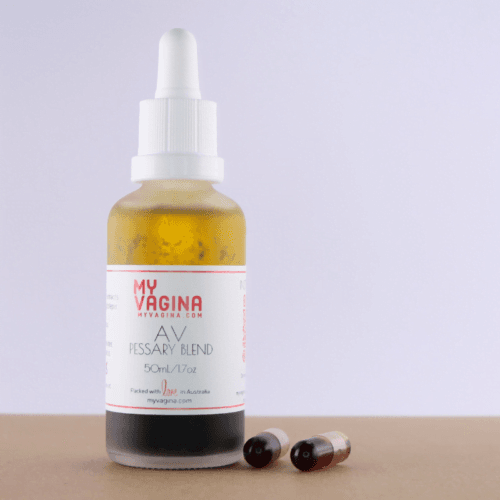Understanding how the topical AV vaginal and penile blend works
Understand each ingredient in the topical vaginal and penile AV treatment.
The relationship between AV and CV
Learn why AV and CV can switch after treatment with antibiotics, and what to do about the underlying issue.
E. faecalis byproducts: understanding vaginal symptoms
Discover how E. faecalis disrupts vaginal health with ammonia, biogenic amines, biofilms, pH imbalances, inflammation, and infections..
Understanding Community State Types
Learn more about community state types of the vaginal microbiome.
My Vagina 2-Week Pathway Clean Up
If you're not quite sure what's wrong, try this 2-week pathway reset.
Vaginal smells – what’s normal?
Our guide to vaginal odours takes you through the different smells, and what they could mean.
How to use the AV Vaginal Pessary (Killing BV)
Instructions on how to use the AV Herbal Blend for Killing BV treatments.
How to test vaginal pH at home
How to accurately test your vaginal pH at home with a video.
Why E. coli and E. faecalis are often found together in infections
E. coli gets a boost from E. faecalis, which may help explain why these two pathogenic pests are often found together in infections.
Testimonials for Killing BV treatments
Wondering if My Vagina's Killing BV treatments work? Read real testimonials from real people who have had great success.
Iron deficiency and bacterial vaginosis, aerobic vaginitis
We examine the evidence as to whether low iron levels can contribute to bacterial vaginosis, aerobic vaginitis or other vulvovaginal dysbiosis/infection.
Haemorrhoids and vaginal infections/UTIs
Haemorrhoids can cause faeces to accumulate around your anus after the toilet, creating a reservoir of bacteria. This bacteria can more easily spread to the vagina simply by regular movements. We offer some options for keeping your haemorrhoids debris-free.
Finegoldia magna in BV
Finegoldia magna is often found naturally in the vagina as a friendly commensal bacteria, but can also be associated with and contribute to bacterial vaginosis. Finegoldia magna can cause a vinegar or ammonia-like smell from the vagina, and compete with friendly lactobacilli.
Understanding vaginal pH
We explain vaginal pH and how it relates to your vaginal smells. If you have a funny smell coming out of your vagina and need to test your vaginal pH, we explain how.
What to do when your period smells like death
Got a vagina that smells like death? We explain what's going on in great detail, with treatment ideas, so that you can solve your bad vag problems quickly and effectively.
How getting wasted affects your vaginal ecosystem
A quick chat about getting wasted and how this affects your microbial colonies.
Using dequalinium chloride (Fluomizin) to treat vaginal infections
Dequalinium chloride (Fluomizin) is a solid broad-spectrum non-antibiotic antimicrobial used vaginally for infections of all kinds. Dequalinium chloride is commonly used in throat lozenges.
Enterococcus faecium in vaginal infections
E. faecium is a bacteria that can contribute to or cause vaginal or urinary tract infections.
Comparison table – what type of bad vag do I have? (BV, AV, Trich, Yeast)
Easy reference table for determining your vaginal infection.
Understanding and using povidone-iodine (Betadine) for vaginal infections
Learn about the effectiveness of povidone-iodine (Betadine) vaginally for use in infections such as BV, AV and yeast.
- 1
- 2










